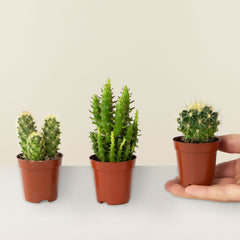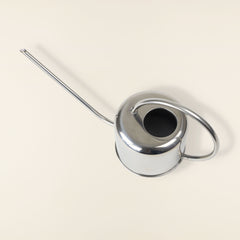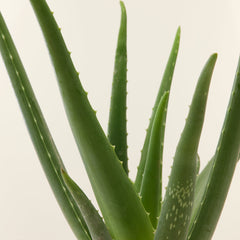August 26, 2022
Is air conditioning bad for our plants?
Many plants thrive in hot, foggy weather, especially tropical plants native to wetter jungle habitats. The cool , dry air that we are comfortable with is unfortunately not as beneficial for many houseplants.
THE EFFECTS OF AIR CONDITIONING:
The biggest dangers of air conditioning aretemperature changes andlower humidity. Here are somesigns that your plantsare suffering from the cool, air-conditioned air in your home:
- Your plant suddenly and quickly loses its leaves.
- Your plant's leaves are wilting or turning yellow.
- The leaves of your plant are turning brown on its edges.
- Your plant begins to sag.
- Your flowering plant is no longer blooming.
- Growth has slowed or stopped.
The good news is that you don't need to turn off your air conditioning or risk giving up indoor gardening altogether – there are plenty of solutions to combat the negative effects of air conditioning on your plants.
HERE'S HOW TO PROTECT YOUR PLANTS:
1) MOVE THEM
Keeping your plant away from air conditioning vents is essential, the direct blast of cold air dehydrates your plants and can even damage its plant cells. By the way, the same can be said for plants that are placed near windows or doors that are frequently opened during the colder months of the year.
Try moving your plants to warmer rooms or away from air vents, as long as these new locations also provide the necessary light conditions for your plant's needs. Areas of your home such as kitchens, bathrooms, and laundry rooms tend to stay more humid and warm.
2) INCREASE THE HUMIDITY LEVEL
Once you've moved your plant, it's important to raise the humidity level around your plant. Air conditioning dries out your interiors, so the humidity level is between 30 and 40% in most air-conditioned rooms. Ideally, for indoor plants, this should be between 40 and 60%. This is all the more true for tropical plants which will prefer 60% humidity.
Of course, it's not practical or useful to keep your whole house this humid. Fortunately, it is possible to create humid microclimates (small areas around your plants that trap more water vapor in the air).
Here are some strategies to try:
Use humidifying trays: Place a layer of clay pebbles on a tray, add water until the clay pebbles are almost completely covered, and place your plant just on top. The water in the tray continuously evaporates and thus increases the humidity of the air around your plant. Don't forget to top up the water level from time to time.
Group Your Plants: Create a pocket of increased humidity by placing multiple plants in a group. As plants transpire, water vapor is released into the air and trapped in their congested canopies. You can also conceal a dish of water in the center of the plants to further increase the amount of water vapor in the air.
Misting your plants: Misting your plant's leaves can increase humidity as the water droplets evaporate into the air. However, the effect is very short-lived, so it's best to combine this method with the one listed above to get a measurable increase in humidity.
Adding a humidifier: This is one of the most efficient options and can benefit both plants and humans. Adding moisture to dry rooms will keep your plants hydrated and prevent you from developing dry, irritated skin.
3) PLACE THEM OUTSIDE
Good news, almost all the indoor green plants that we offer on our site can live outside during the summer! But don't forget to pay attention to the weather. We recommend moving your plants outside when temperatures stay consistently above 10°. If nighttime temperatures fall below 10°, bring your plants indoors at night and always pay attention to its location according to its growing conditions.
Control outdoor light
The first thing to consider is the intensity of outdoor sunlight. It's best to place your plants in sheltered locations that mimic their indoor lighting needs.
Most houseplants will be happy in bright, indirect light next to a covered porch or under a shade tree. Introduce them slowly outdoors, letting them sit for an hour the first day, then a few hours the next day, and so on, to avoid the shock that can accompany exposure to new temperatures.
Even plants that can handle strong light, such as birds of paradise and euphorbia cactus , will need time to adjust to the intensity of outdoor sun after living indoors. If your plant is going to be exposed to direct sunlight, be sure to acclimate it slowly over the course of a week or two to prevent the leaves from ending up sunburned.
Control outdoor watering
The same principles of watering your houseplant apply outdoors: check soil moisture regularly and water thoroughly when your plant's soil has dried out.
Start by checking the soil daily, as some plants may require more frequent watering once moved outdoors.
Of course, your plants will also be able to enjoy the rain, but don't forget to remove the saucers so that the water can drain freely. And as always, keep an eye out for turbulent weather - high winds can topple or damage your plant.
As you will have understood, maintaining a pleasant temperature in your home while providing a suitable climate for your plants is possible by using the right technique. Knowing the individual needs of your plants will allow you to meet their expectations and know when a location does not allow them to flourish.





